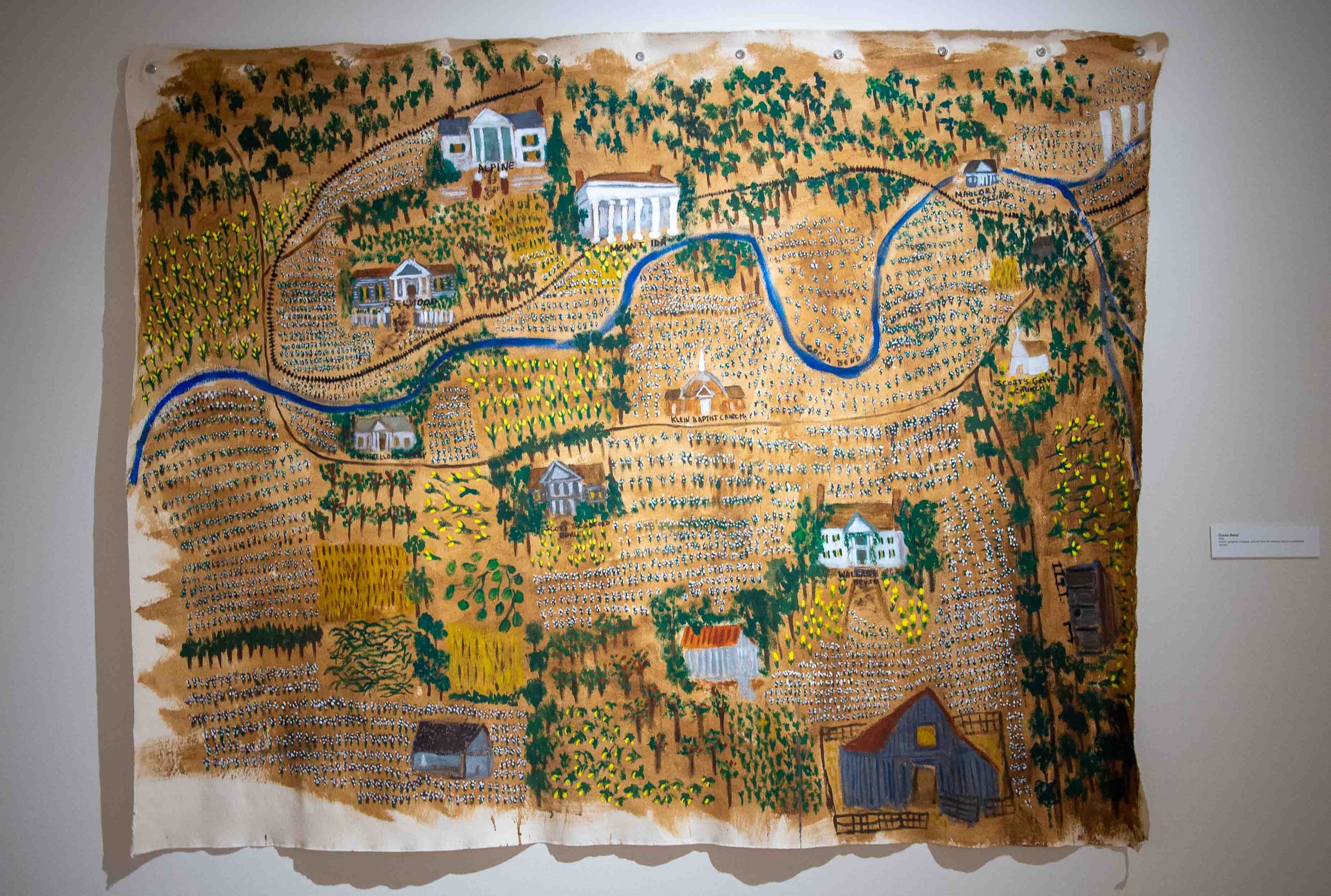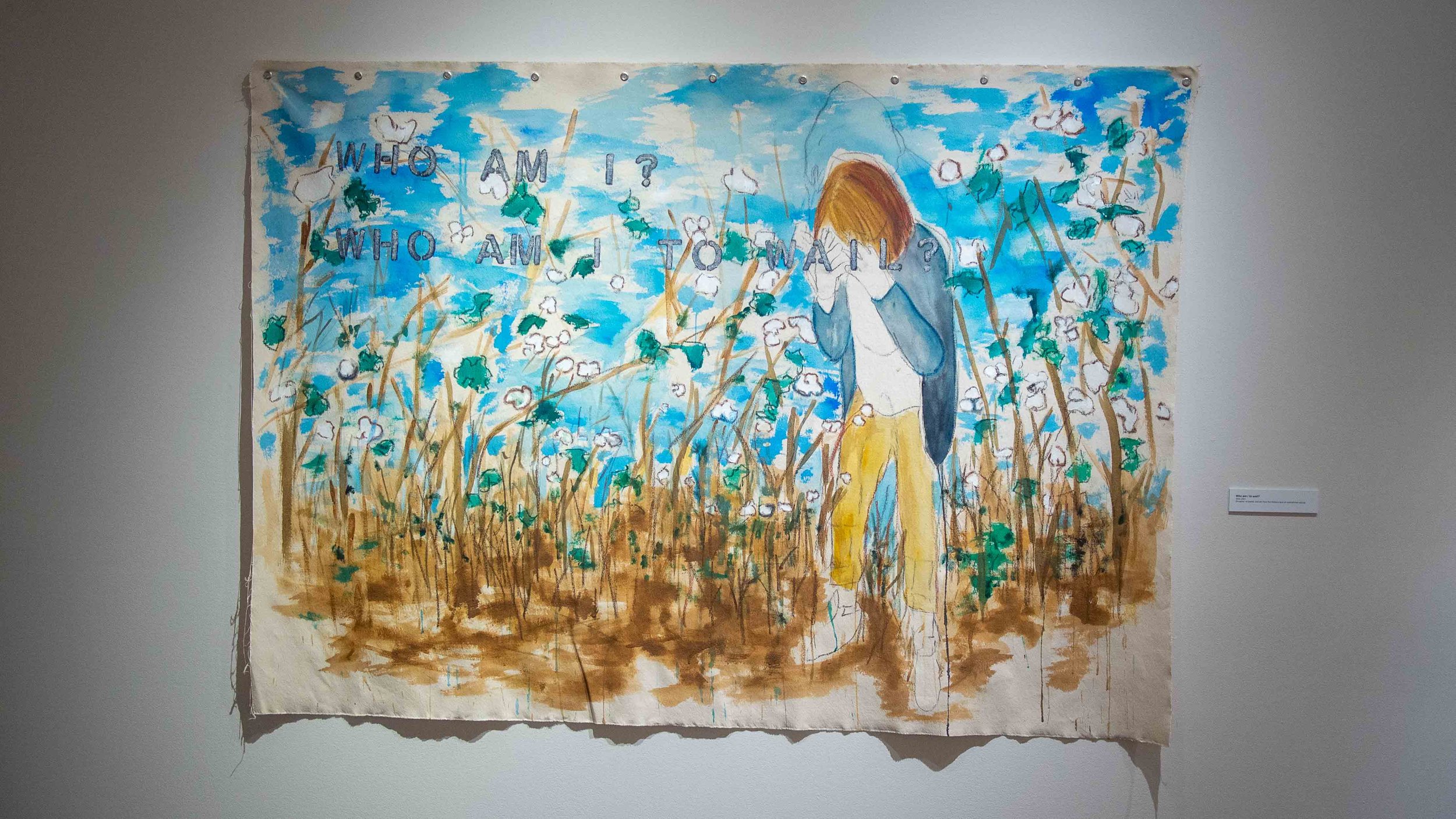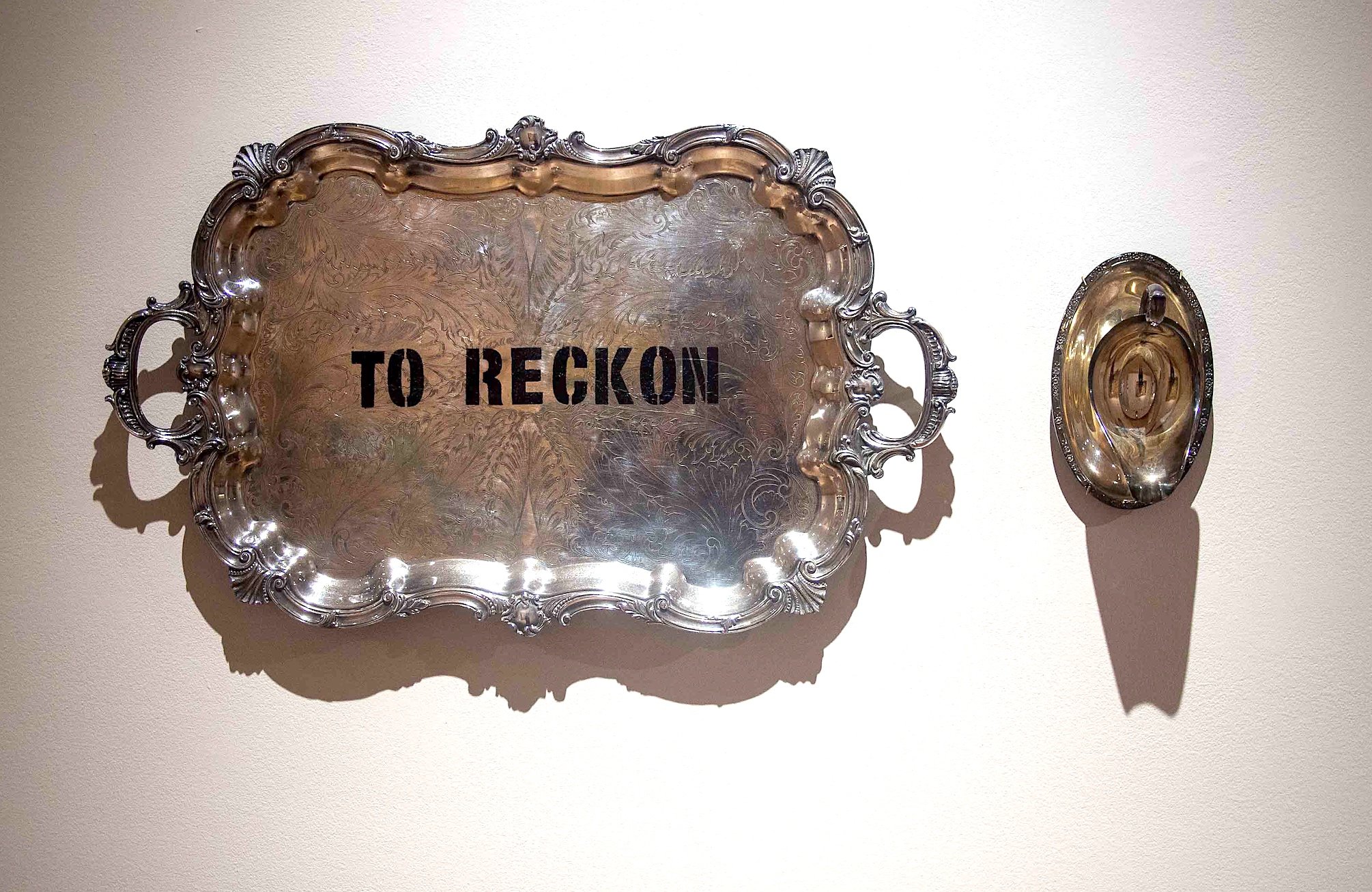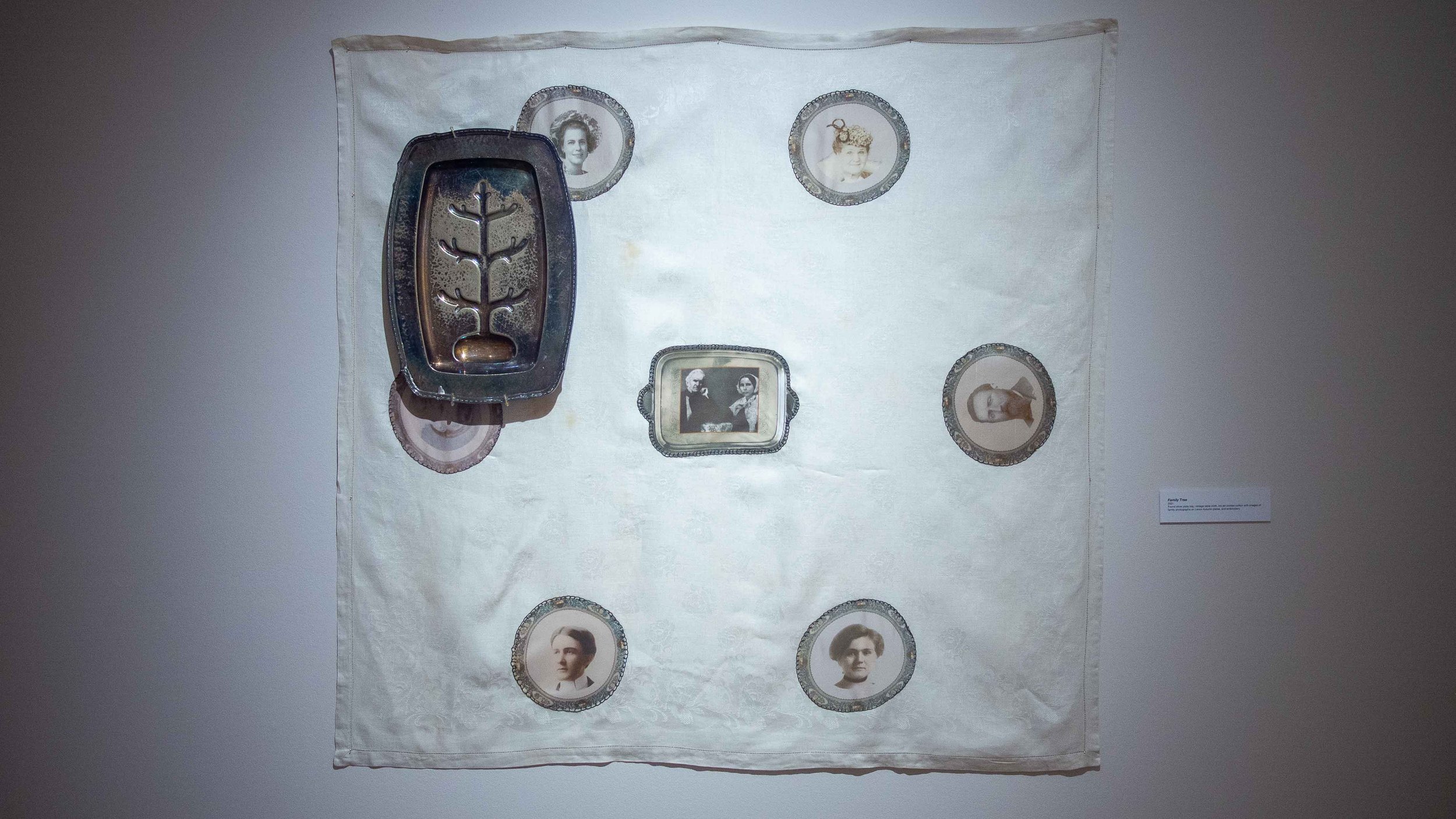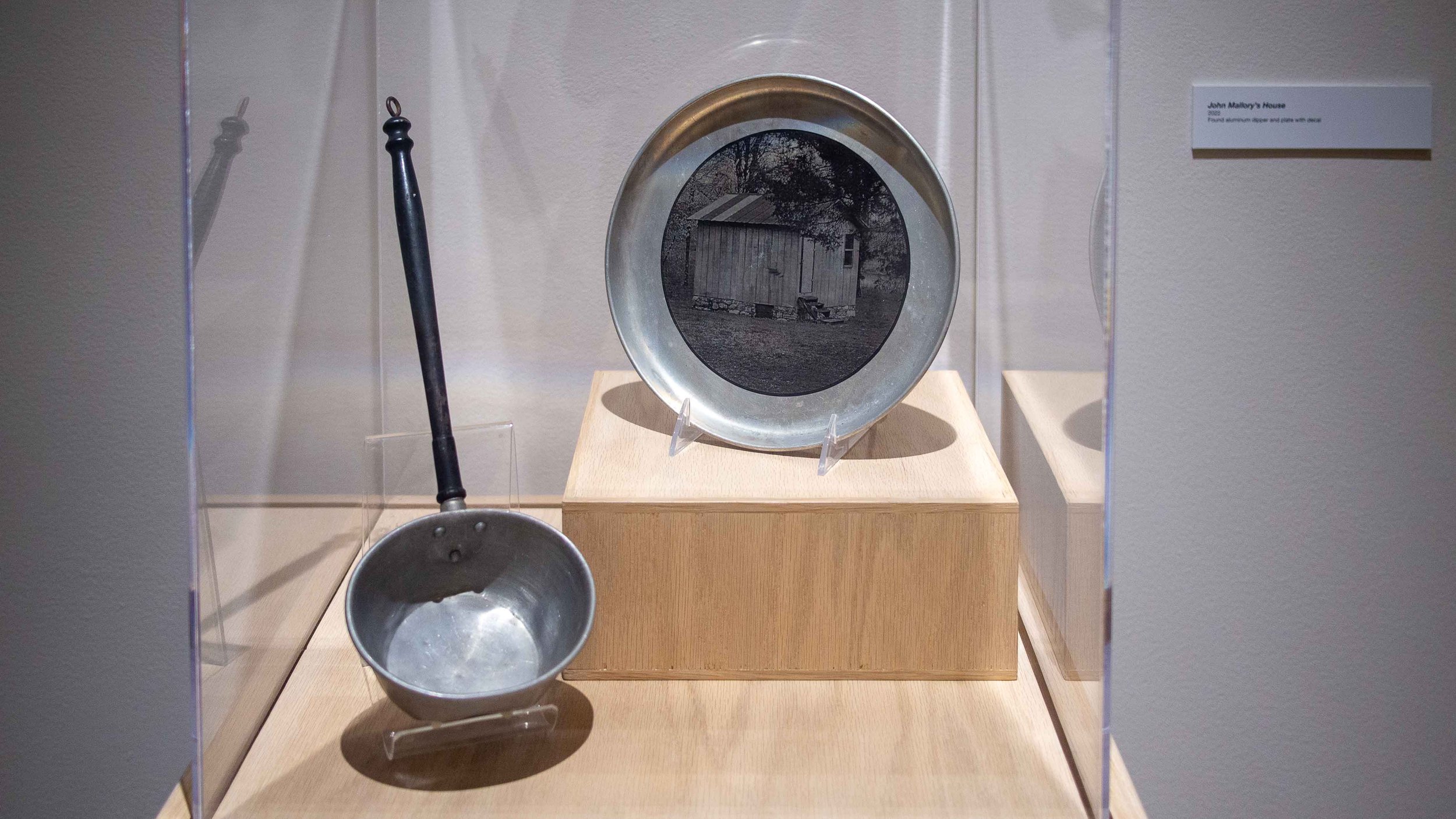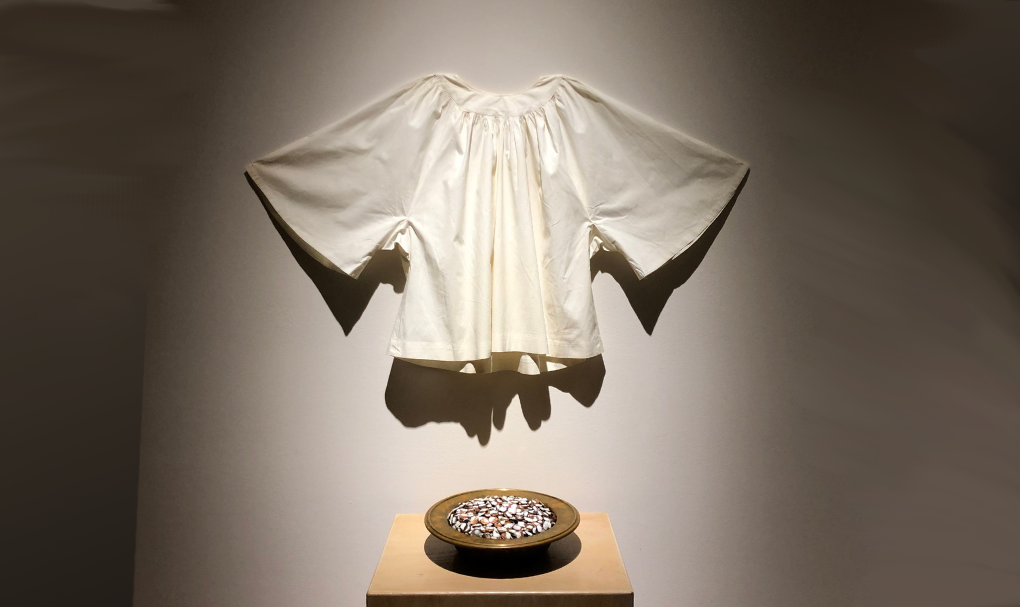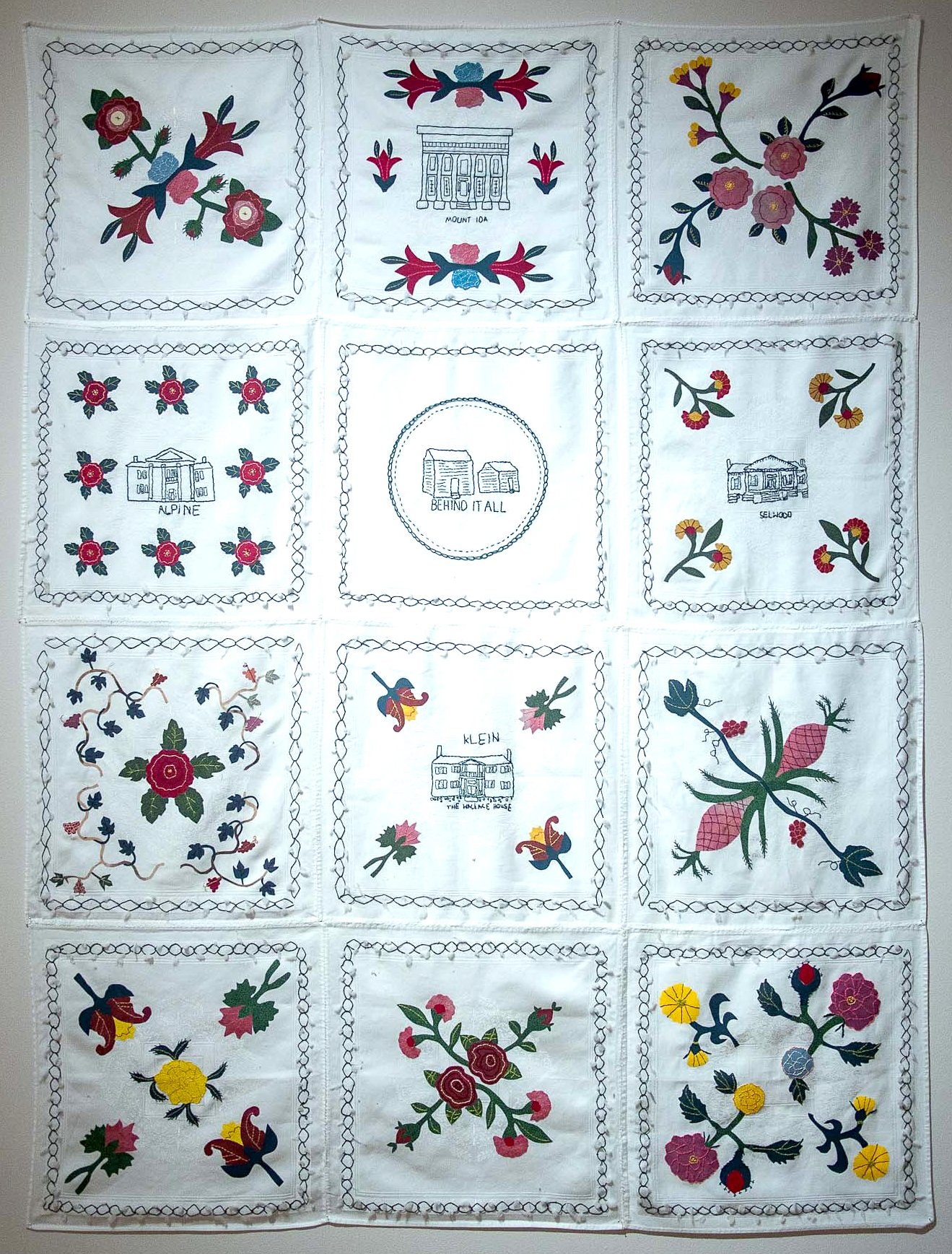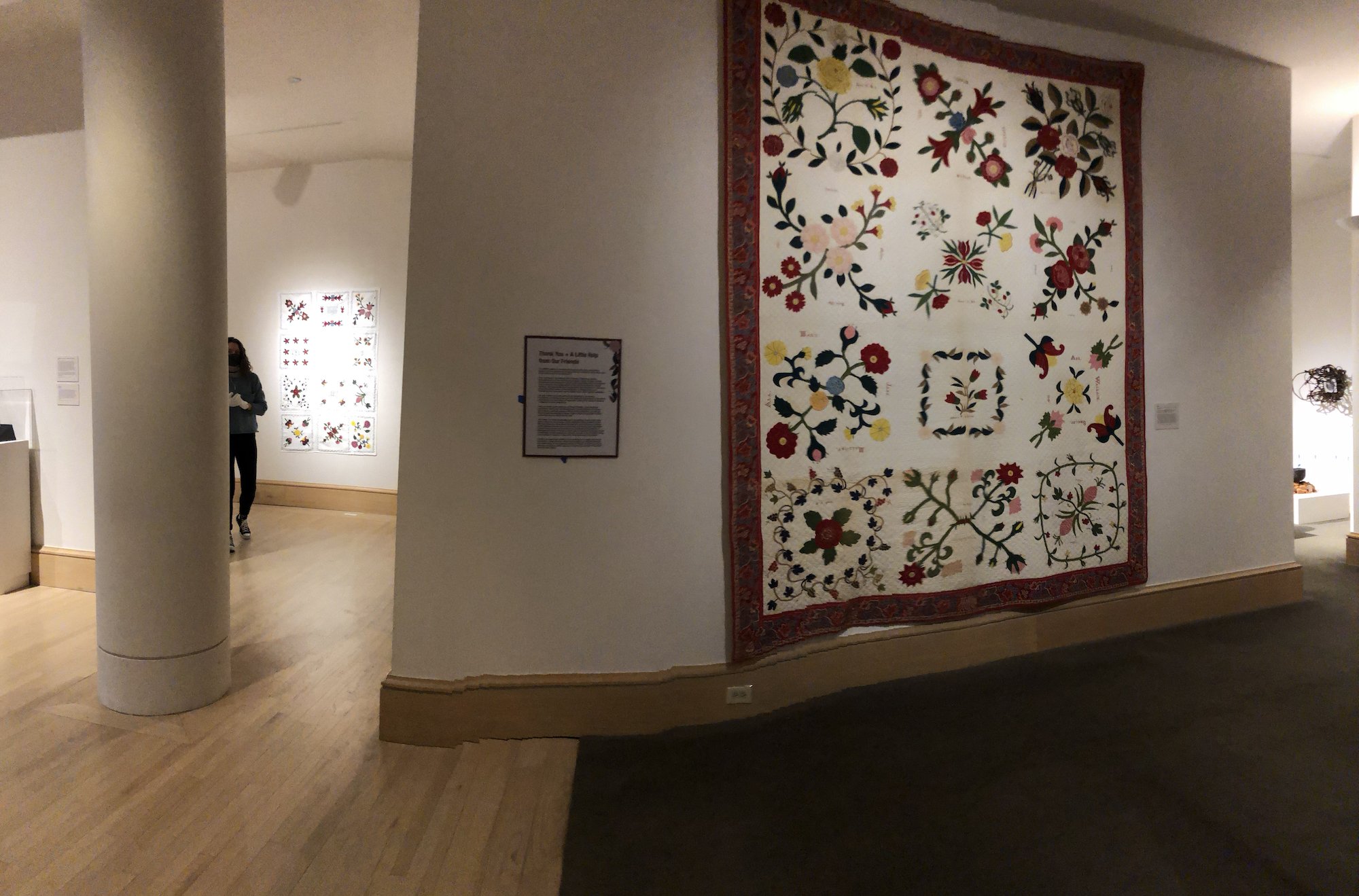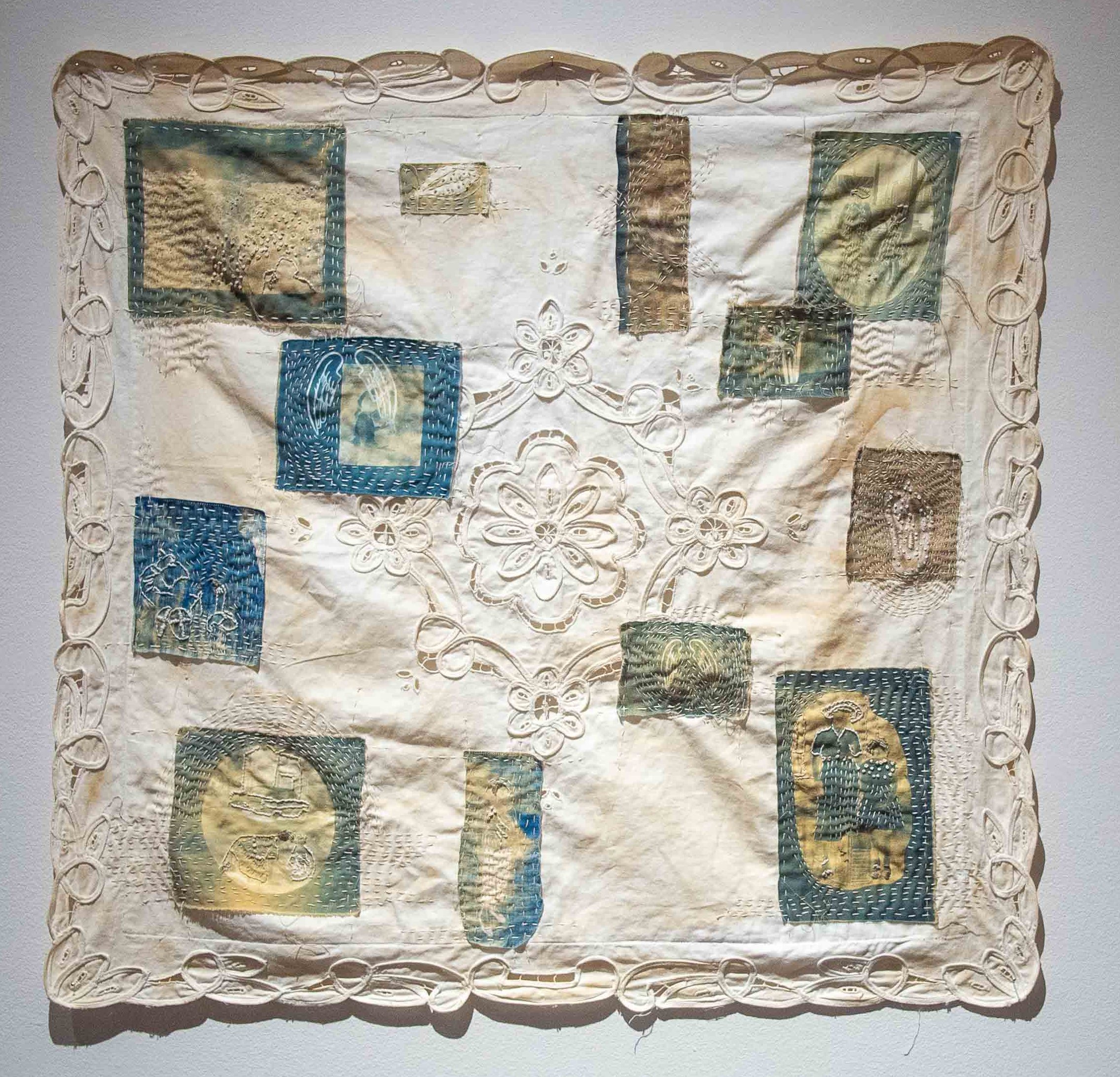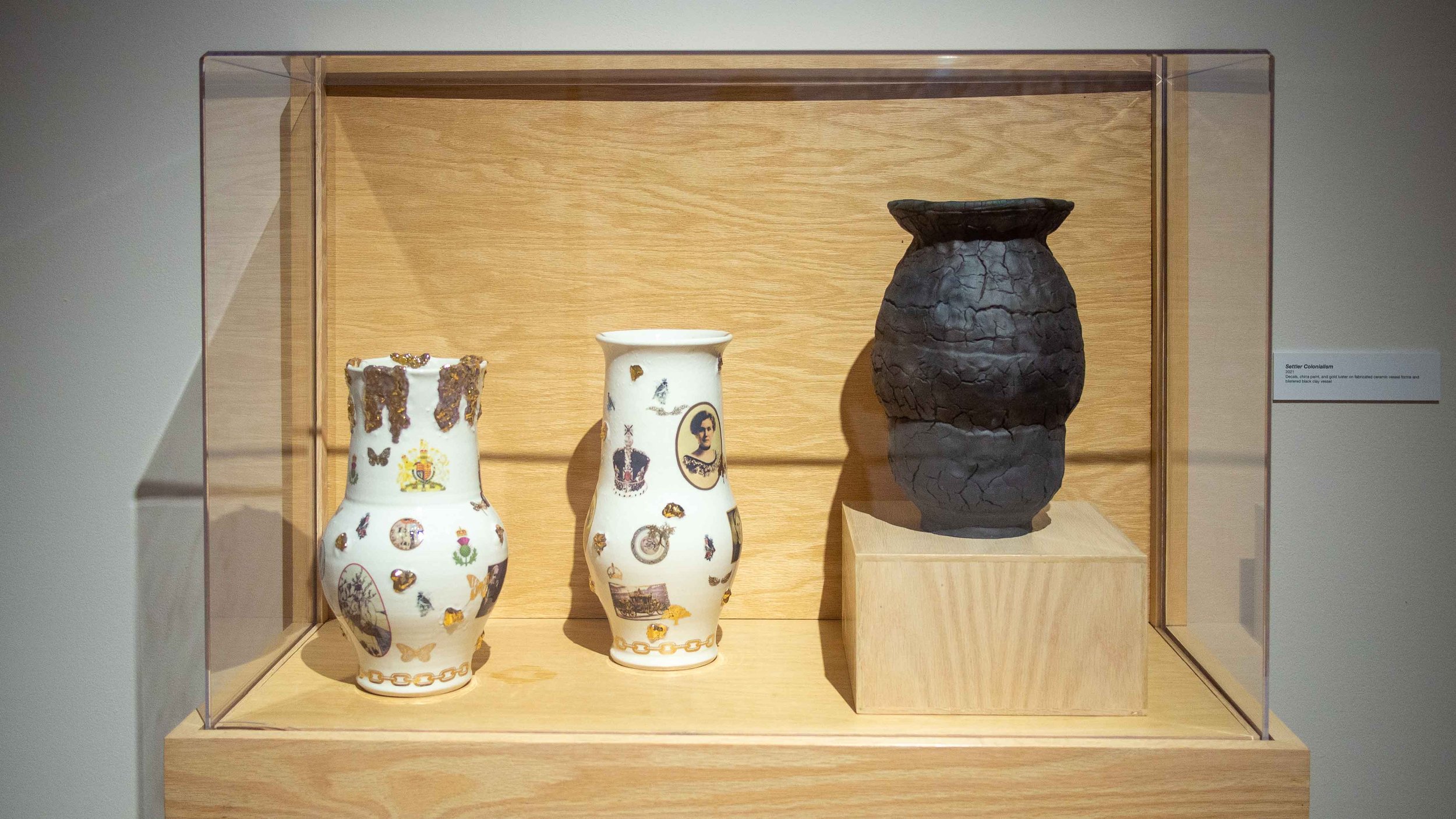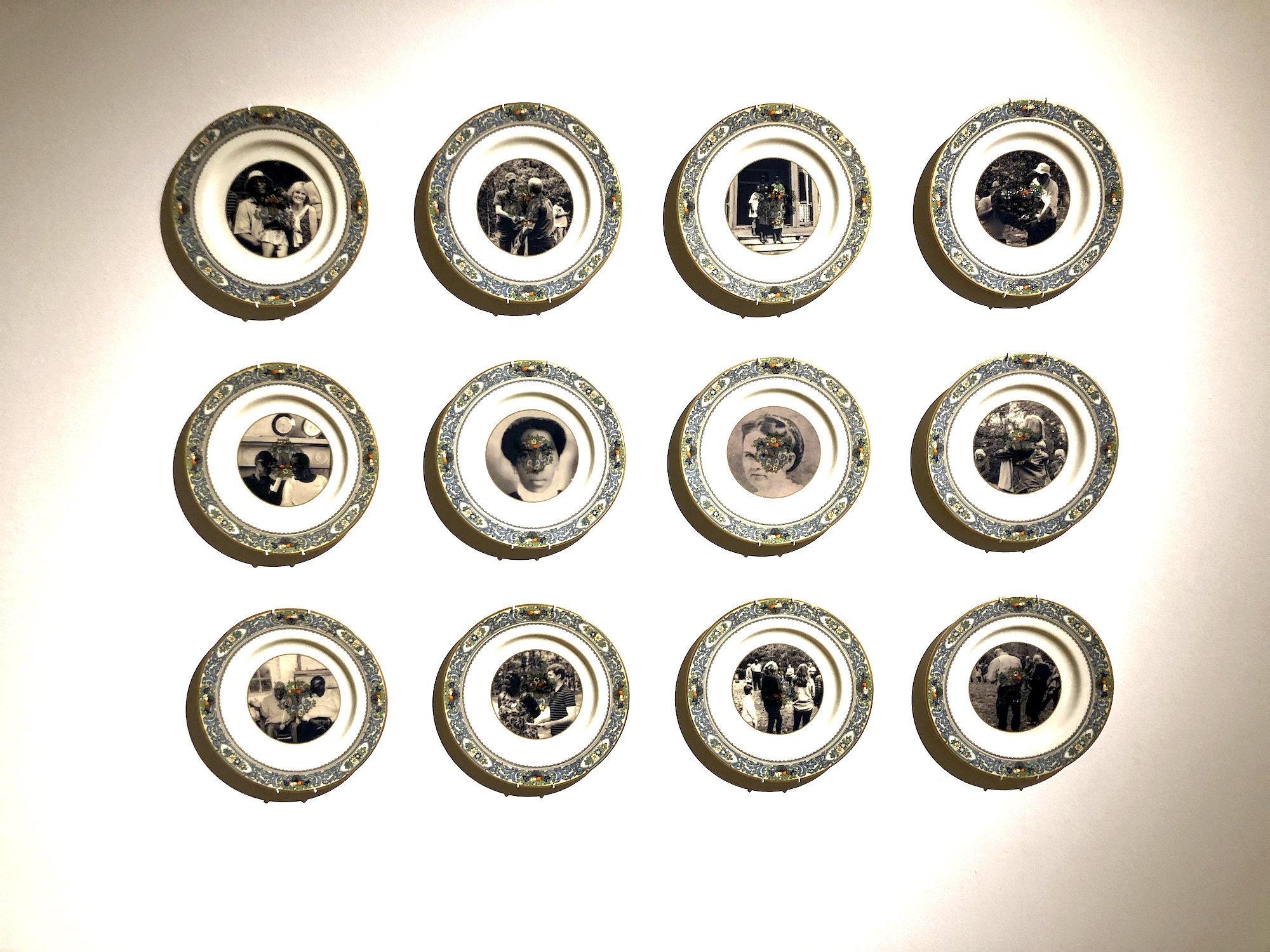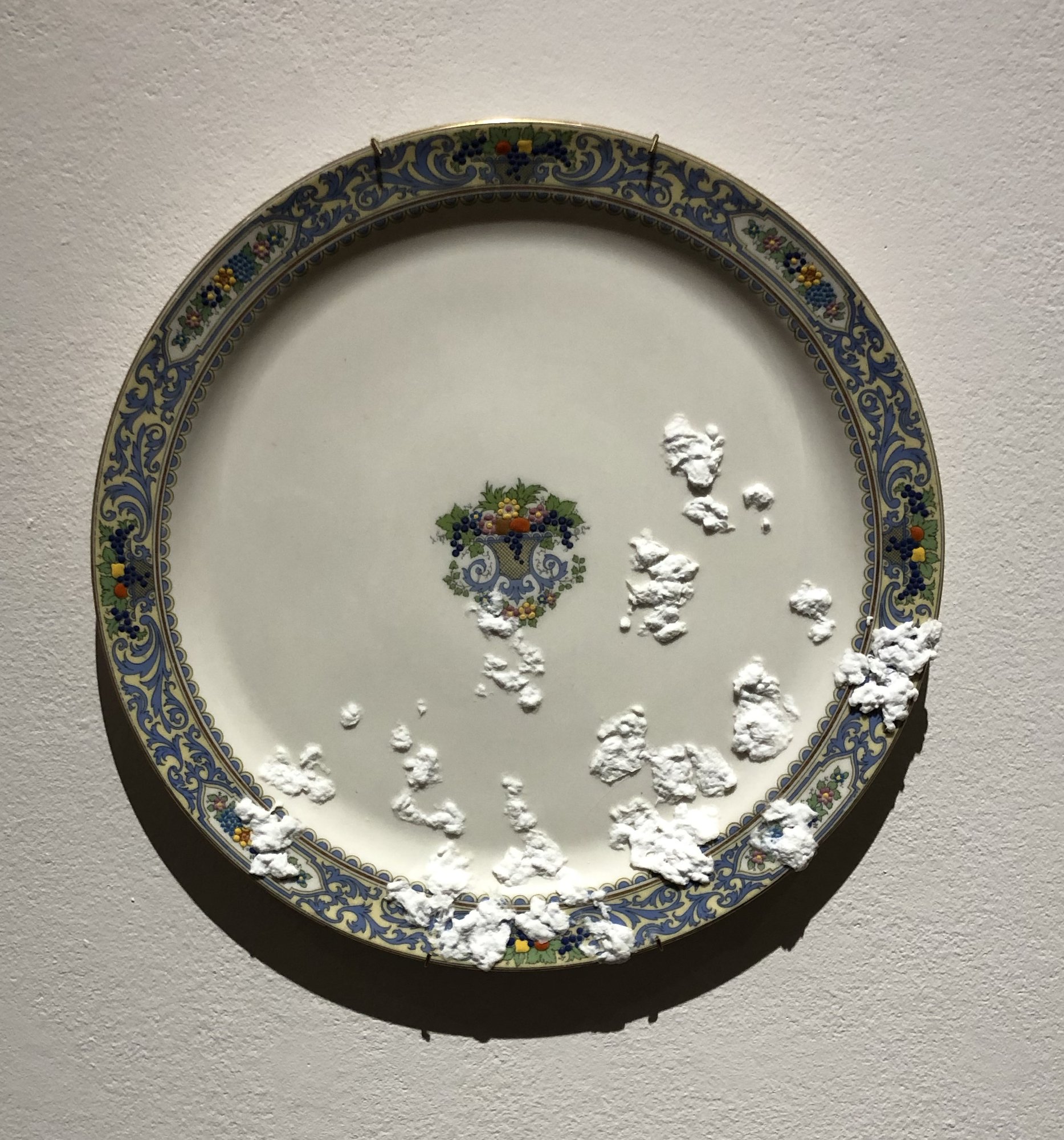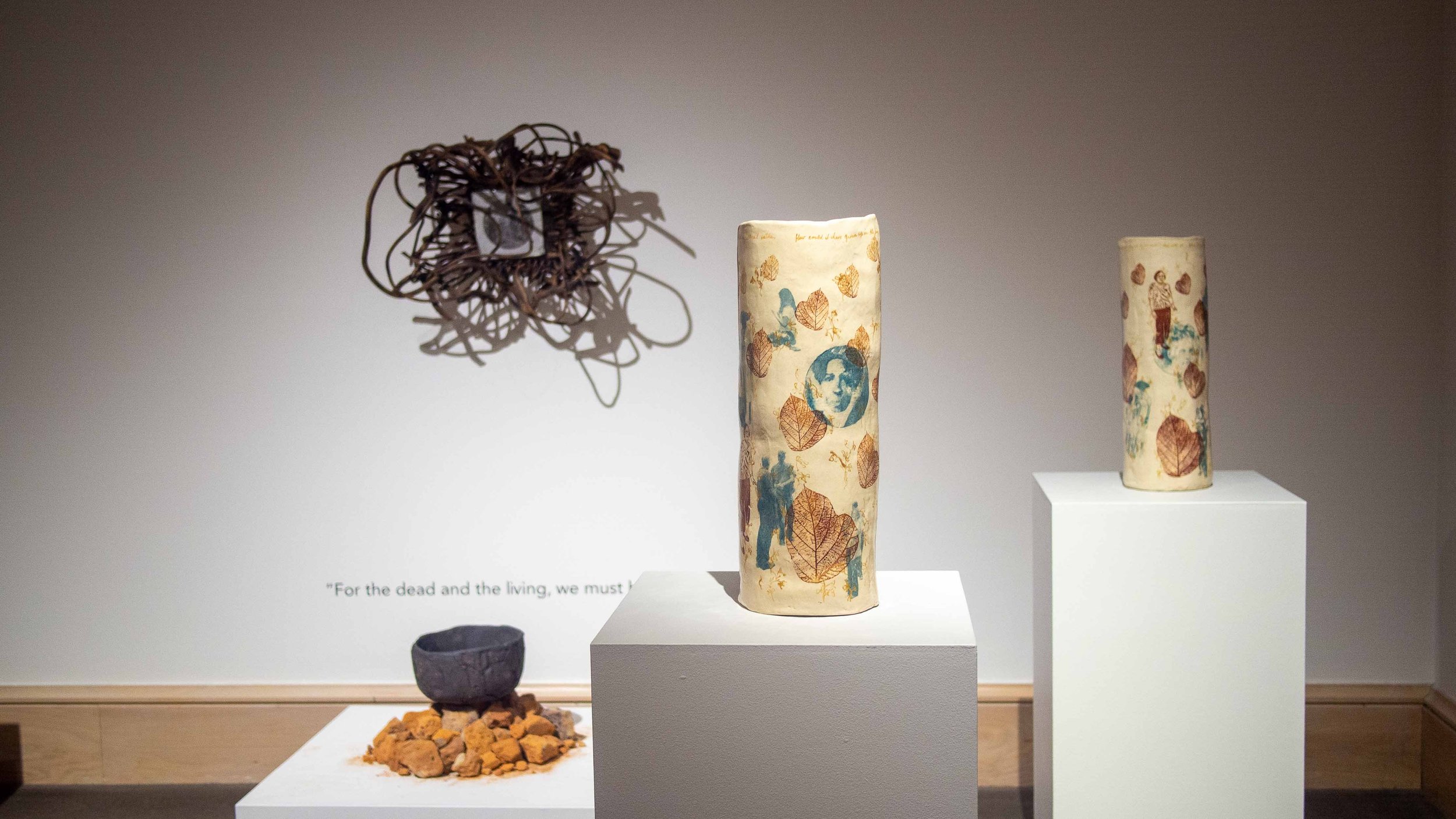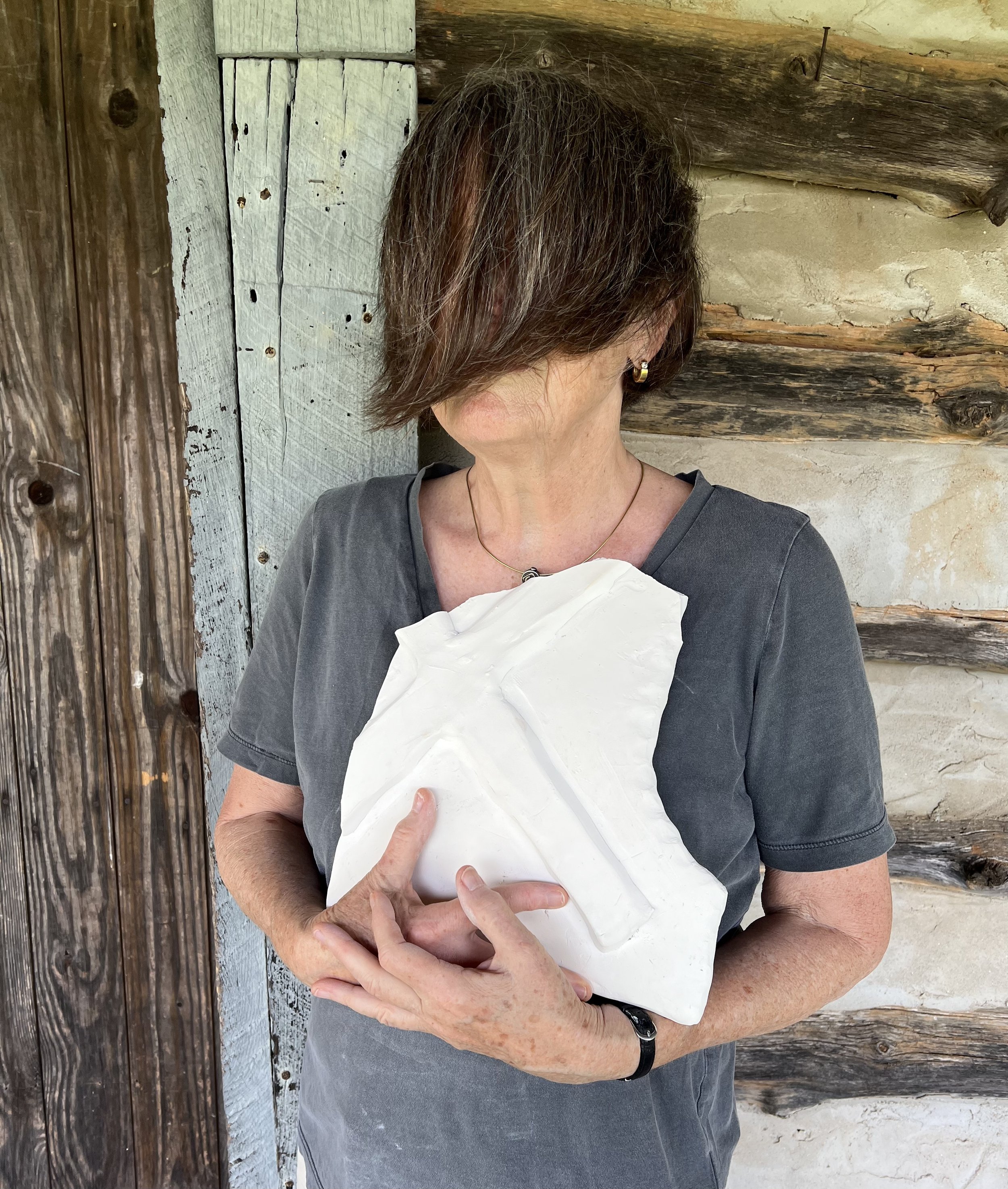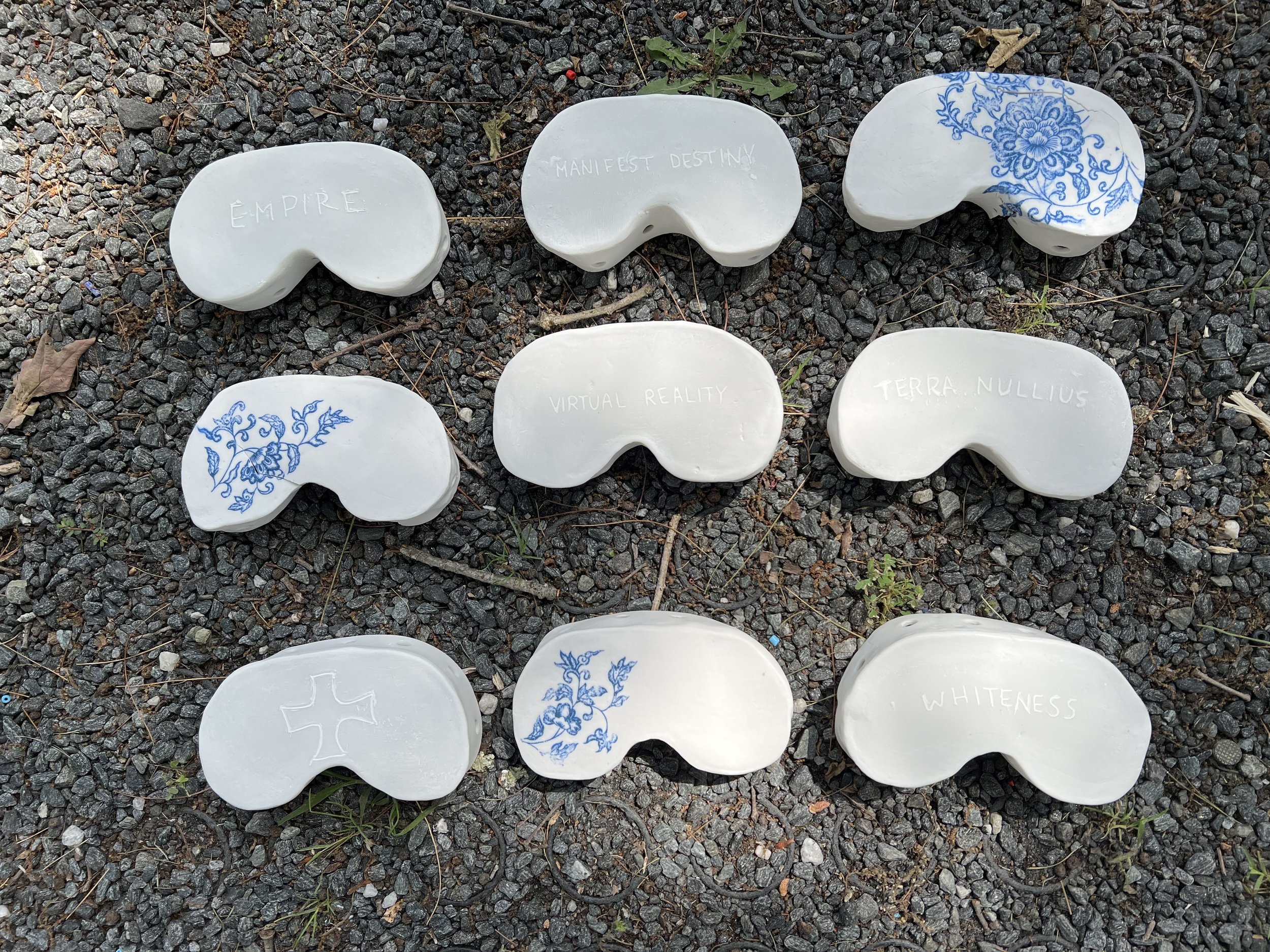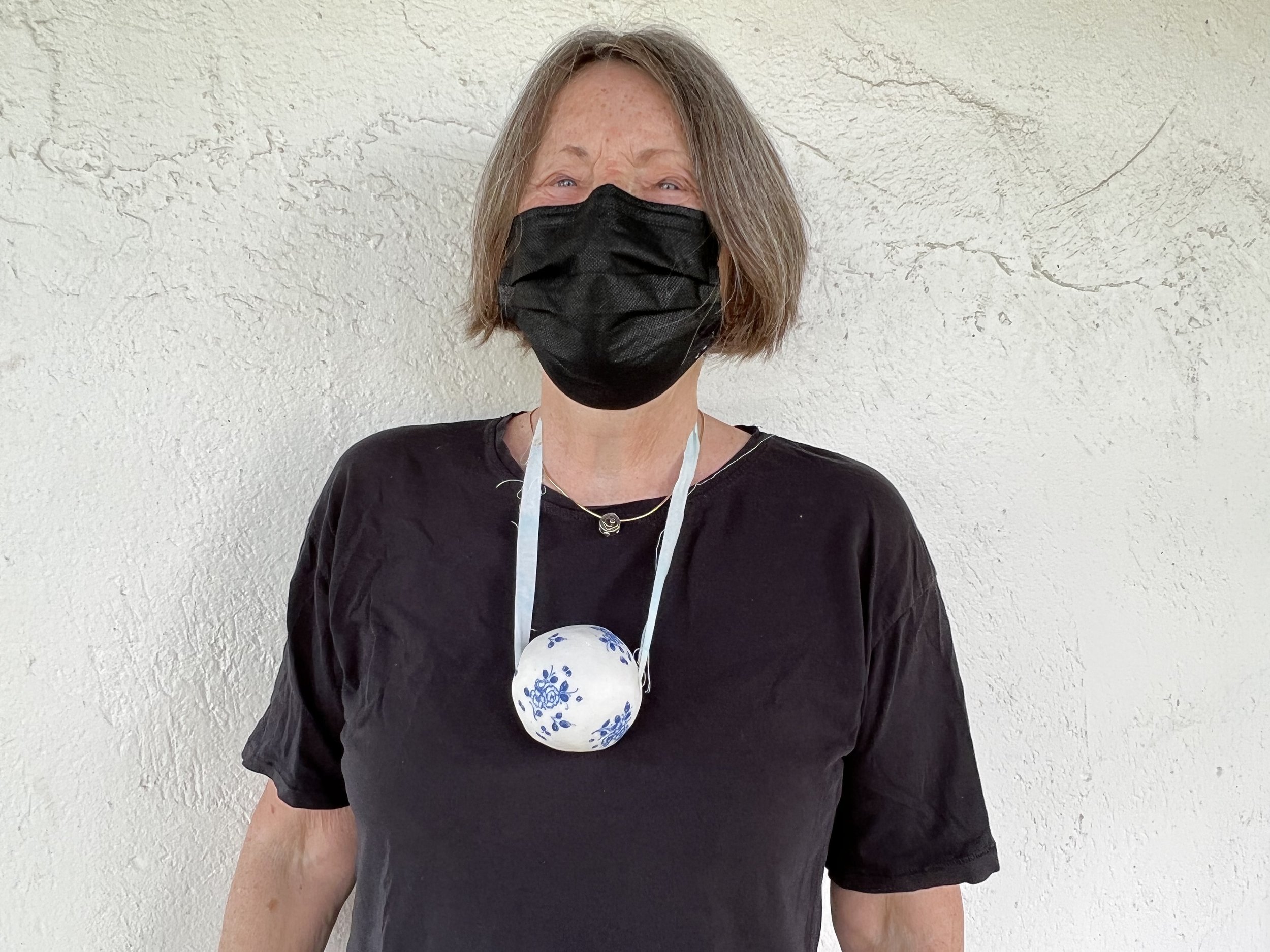Montgomery Museum of Fine Arts
January 22 – April 10, 2022
Walk Humbly, the name of this exhibit, is from the title Fear God and Walk Humbly: The Agricultural Journal of James Mallory 1843-1877, edited and published by the University of Alabama Press in 1997. James Mallory was part of the kinship network of my ancestors, a network of Scots and English Americans who moved from Virginia to Alabama, to the Coosa River Valley in Talladega and Shelby Counties, in the mid nineteenth century. Unlike the planters in the Black Belt and along the Gulf Coast, most of these families lived an agrarian life without the frills and fineries of Pieces of History, the exhibition to which this responds. What they do have in common is that they were part of the cotton economy and their wealth was built on the backs of the persons they enslaved.
Walk Humbly is a considered response to the primary exhibit at the museum, Pieces of History, which has assembled decorative objects of the Gulf Coast and Alabama Black Belt. My hope is to provoke discussion of the root of those objects in the cotton economy that was built on the institution of chattel slavery and the unpaid labor of the individuals the planters had placed in bondage, and how these systems persist in other forms to this day
The cotton economy anchors the work in this exhibit. However, the exhibit also tells the story of two homecomings of Black and white descendants of the Wallace Plantation who have come together to hold space and conversation in order to develop a new shared narrative for the future.
My work is image based, on old and contemporaneous photographs. From Natasha Trethewey’s Theories of Time and Space, “the photograph—who you were—will be waiting when you return”. I also work with the notion from Michel Foucault of objects, including photographs, as the “materialization of memory”.
